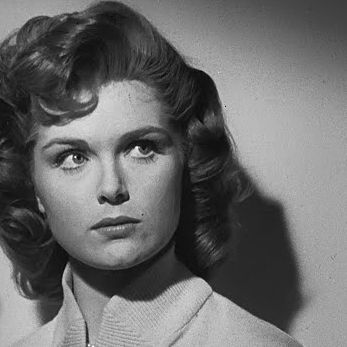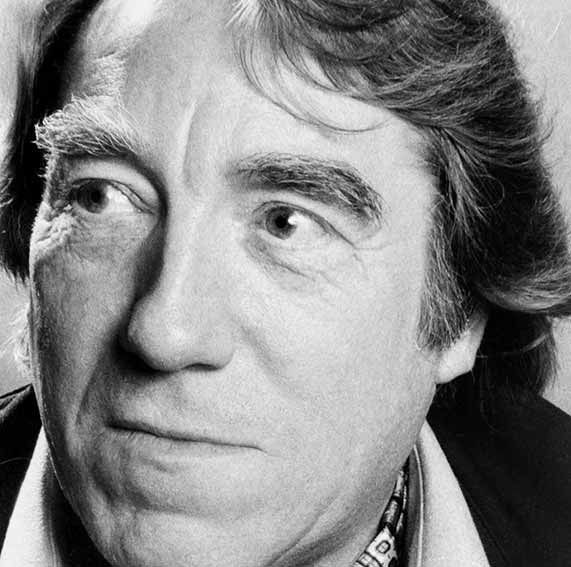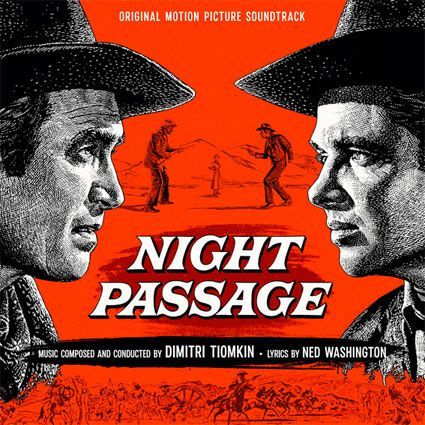by Quentin Billard
•
30 May 2024
INTRADA RECORDS Time: 29/40 - Tracks: 15 _____________________________________________________________________________ Polar mineur à petit budget datant de 1959 et réalisé par Irving Lerner, « City of Fear » met en scène Vince Edwards dans le rôle de Vince Ryker, un détenu qui s’est évadé de prison avec un complice en emportant avec lui un conteneur cylindrique, croyant contenir de l’héroïne. Mais ce que Vince ignore, c’est que le conteneur contient en réalité du cobalt-60, un matériau radioactif extrêmement dangereux, capable de raser une ville entière. Ryker se réfugie alors dans une chambre d’hôtel à Los Angeles et retrouve à l’occasion sa fiancée, tandis que le détenu est traqué par la police, qui va tout faire pour retrouver Ryker et intercepter le produit radioactif avant qu’il ne soit trop tard. Le scénario du film reste donc très convenu et rappelle certains polars de l’époque (on pense par exemple à « Panic in the Streets » d’Elia Kazan en 1950, sur un scénario assez similaire), mais l’arrivée d’une intrigue en rapport avec la menace de la radioactivité est assez nouvelle pour l’époque et inspirera d’autres polars par la suite (cf. « The Satan Bug » de John Sturges en 1965). Le film repose sur un montage sobre et un rythme assez lent, chose curieuse pour une histoire de course contre la montre et de traque policière. A vrai dire, le manque de rythme et l’allure modérée des péripéties empêchent le film de décoller vraiment : Vince Edwards se voit confier ici un rôle solide, avec un personnage principal dont la santé ne cessera de se dégrader tout au long du film, subissant la radioactivité mortelle de son conteneur qu’il croit contenir de l’héroïne. Autour de lui, quelques personnages secondaires sans grand relief et toute une armada de policiers sérieux et stressés, bien déterminés à retrouver l’évadé et à récupérer le cobalt-60. Malgré l’interprétation convaincante de Vince Edwards (connu pour son rôle dans « Murder by Contract ») et quelques décors urbains réussis – le tout servi par une atmosphère de paranoïa typique du cinéma américain en pleine guerre froide - « City of Fear » déçoit par son manque de moyen et d’ambition, et échoue finalement à susciter le moindre suspense ou la moindre tension : la faute à une mise en scène réaliste, ultra sobre mais sans grande conviction, impersonnelle et peu convaincante, un comble pour un polar de ce genre qui tente de suivre la mode des films noirs américains de l’époque, mais sans réelle passion. Voilà donc une série-B poussiéreuse qui semble être très rapidement tombée dans l’oubli, si l’on excepte une récente réédition dans un coffret DVD consacré aux films noirs des années 50 produits par Columbia Pictures. Le jeune Jerry Goldsmith signa avec « City of Fear » sa deuxième partition musicale pour un long-métrage hollywoodien en 1959, après le western « Black Patch » en 1957. Le jeune musicien, alors âgé de 30 ans, avait à son actif toute une série de partitions écrites pour la télévision, et plus particulièrement pour la CBS, avec laquelle il travailla pendant plusieurs années. Si « City of Fear » fait indiscutablement partie des oeuvres de jeunesse oubliées du maestro, cela n’en demeure pas moins une étape importante dans la jeune carrière du compositeur à la fin des années 50 : le film d’Irving Lerner lui permit de s’attaquer pour la première fois au genre du thriller/polar au cinéma, genre dans lequel il deviendra une référence incontournable pour les décennies à venir. Pour Jerry Goldsmith, le challenge était double sur « City of Fear » : il fallait à la fois évoquer le suspense haletant du film sous la forme d’un compte à rebours, tout en évoquant la menace constante du cobalt-60, véritable anti-héros du film qui devient quasiment une sorte de personnage à part entière – tout en étant associé à Vince Edwards tout au long du récit. Pour Goldsmith, un premier choix s’imposa : celui de l’orchestration. Habitué à travailler pour la CBS avec des formations réduites, le maestro fit appel à un orchestre sans violons ni altos, mais avec tout un pupitre de percussions assez éclectique : xylophone, piano, marimba, harpe, cloches, vibraphone, timbales, caisse claire, glockenspiel, bongos, etc. Le pupitre des cuivres reste aussi très présent et assez imposant, tout comme celui des bois. Les cordes se résument finalement aux registres les plus graves, à travers l’utilisation quasi exclusive des violoncelles et des contrebasses. Dès les premières notes de la musique (« Get Away/Main Title »), Goldsmith établit sans équivoque une sombre atmosphère de poursuite et de danger, à travers une musique agitée, tendue et mouvementée. Alors que l’on aperçoit Ryker et son complice en train de s’échapper à toute vitesse en voiture, Goldsmith introduit une figure rythmique ascendante des cuivres, sur fond de rythmes complexes évoquant tout aussi bien Stravinsky que Bartok – deux influences majeures chez le maestro américain. On notera ici l’utilisation caractéristique du xylophone et des bongos, deux instruments qui seront très présents tout au long du score de « City of Fear », tandis que le piano renforce la tension par ses ponctuations de notes graves sur fond d’harmonies menaçantes des bois et des cuivres : une mélodie se dessine alors lentement au piccolo et au glockenspiel, et qui deviendra très rapidement le thème principal du score, thème empreint d’un certain mystère, tout en annonçant la menace à venir. C’est à partir de « Road Block » que Goldsmith introduit les sonorités associées dans le film à Ryker : on retrouve ici le jeu particulier des percussions (notes rapides de xylophone, ponctuation de piano/timbales) tandis qu’une trompette soliste fait ici son apparition, instrument rattaché dans le film à Ryker. La trompette revient dans « Motel », dans lequel les bongos créent ici un sentiment d’urgence sur fond de ponctuations de trombones et de timbales. Le morceau reflète parfaitement l’ambiance de paranoïa et de tension psychologique du film, tandis que les harmonies sombres du début sont reprises dans « The Facts », pour évoquer la menace du cobalt-60. Ce morceau permet alors à Jerry Goldsmith de développer les sonorités associées à la substance toxique dans le film (un peu comme il le fera quelques années plus tard dans le film « The Satan Bug » en 1965), par le biais de ponctuations de trompettes en sourdine, de percussion métallique et d’un raclement de guiro, évoquant judicieusement le contenant métallique du cobalt-60, que transporte Ryker tout au long du film (croyant à tort qu’il contient de la drogue). « Montage #1 » est quand à lui un premier morceau-clé de la partition de « City of Fear », car le morceau introduit les sonorités associées aux policiers qui traquent le fugitif tout au long du film. Goldsmith met ici l’accent sur un ostinato quasi guerrier de timbales agressives sur fond de cuivres en sourdine, de bois aigus et de caisse claire quasi martial : le morceau possède d’ailleurs un côté militaire assez impressionnant, évoquant les forces policières et l’urgence de la situation : stopper le fugitif à tout prix. Le réalisateur offre même une séquence de montage illustrant les préparatifs de la police pour le début de la course poursuite dans toute la ville, ce qui permet au maestro de s’exprimer pleinement en musique avec « Montage #1 ». Plus particulier, « Tennis Shoes » introduit du jazz traditionnel pour le côté « polar » du film (à noter que le pianiste du score n’est autre que le jeune John Williams !). Le morceau est associé dans le film au personnage de Pete Hallon (Sherwood Price), le gangster complice de Ryker que ce dernier finira par assassiner à la suite de plusieurs maladresses. Le motif jazzy d’Hallon revient ensuite dans « The Shoes » et « Montage #2 », qui reprend le même sentiment d’urgence que la première séquence de montage policier, avec le retour ici du motif descendant rapide de 7 notes qui introduisait le film au tout début de « Get Away/Main Title ». La mélodie principale de piccolo sur fond d’harmonies sombres de bois reviennent enfin dans « You Can’t Stay », rappelant encore une fois la menace du cobalt-60, avec une opposition étonnante ici entre le registre très aigu de la mélodie et l’extrême grave des harmonies, un élément qui renforce davantage la tension dans la musique du film. Le morceau développe ensuite le thème principal pour les dernières secondes du morceau, reprenant une bonne partie du « Main Title ». La tension monte ensuite d’un cran dans le sombre et agité « Taxicab », reprenant les ponctuations métalliques et agressives associées au cobalt-60 (avec son effet particulier du raclement de guiro cubain), tout comme le sombre « Waiting » ou l’oppressant « Search » et son écriture torturée de cordes évoquant la dégradation physique et mentale de Ryker, contaminé par le cobalt-60. « Search » permet au compositeur de mélanger les sonorités métalliques de la substance toxique, la trompette « polar » de Ryker et les harmonies sombres et torturées du « Main Title », aboutissant aux rythmes de bongos/xylophone syncopés complexes de « Track Down » et au climax brutal de « End of the Road » avec sa série de notes staccatos complexes de trompettes et contrebasses. La tension orchestrale de « End of the Road » aboutit finalement à la coda agressive de « Finale », dans lequel Goldsmith résume ses principales idées sonores/thématiques/instrumentales de sa partition en moins de 2 minutes pour la conclusion du film – on retrouve ainsi le motif descendant du « Main Title », le thème principal, le motif métallique et le raclement de guiro du cobalt-60 – un final somme toute assez sombre et élégiaque, typique de Goldsmith. Vous l’aurez certainement compris, « City of Fear » possède déjà les principaux atouts du style Jerry Goldsmith, bien plus reconnaissable ici que dans son premier essai de 1957, « Black Patch ». La musique de « City of Fear » reste d'ailleurs le meilleur élément du long-métrage un peu pauvre d'Irving Lerner : aux images sèches et peu inspirantes du film, Goldsmith répond par une musique sombre, complexe, virile, nerveuse et oppressante. Le musicien met en avant tout au long du film d’Irving Lerner une instrumentation personnelle, mélangeant les influences du XXe siècle (Stravinsky, Bartok, etc.) avec une inventivité et une modernité déconcertante - on est déjà en plein dans le style suspense du Goldsmith des années 60/70. Goldsmith fit partie à cette époque d’une nouvelle génération de musiciens qui apportèrent un point de vue différent et rafraîchissant à la musique de film hollywoodienne (Bernard Herrmann ayant déjà ouvert la voie à cette nouvelle conception) : là où un Steiner ou un Newman aurait proposé une musique purement jazzy ou même inspirée du Romantisme allemand, Goldsmith ira davantage vers la musique extra européenne tout en bousculant l’orchestre hollywoodien traditionnel et en s’affranchissant des figures rythmiques classiques, mélodiques et harmoniques du Golden Age hollywoodien. Sans être un chef-d’oeuvre dans son genre, « City of Fear » reste malgré tout un premier score majeur dans les musiques de jeunesse de Jerry Goldsmith : cette partition, pas si anecdotique qu’elle en a l’air au premier abord, servira de pont vers de futures partitions telles que « The Prize » et surtout « The Satan Bug ». « City of Fear » permit ainsi à Goldsmith de concrétiser ses idées qu’il développa tout au long de ses années à la CBS, et les amplifia sur le film d’Iriving Lerner à l’échelle cinématographique, annonçant déjà certaines de ses futures grandes musiques d’action/suspense pour les décennies à venir – les recettes du style Goldsmith sont déjà là : rythmes syncopés complexes, orchestrations inventives, développements thématiques riches, travail passionné sur la relation image/musique, etc. Voilà donc une musique rare et un peu oubliée du maestro californien, à redécouvrir rapidement grâce à l’excellente édition CD publiée par Intrada, qui contient l’intégralité des 29 minutes écrites par Goldsmith pour « City of Fear », le tout servi par un son tout à fait honorable pour un enregistrement de 1959 !





